| Article ID | Journal | Published Year | Pages | File Type |
|---|---|---|---|---|
| 2012129 | Pharmacological Reports | 2010 | 14 Pages |
The traditional Chinese medicinal mushroom, Ganoderma lucidum, has been used in Asia for several thousand years for the prevention and treatment of a variety of diseases, including cancer. In previous work, we purified ganoderic acid T (GA-T) from G. lucidum [ 28]. In the present study, we investigate the functions of GA-T in terms of its effects on invasion in vitro and metastasis in vivo. A trypan blue dye exclusion assay indicates that GA-T inhibits proliferation of HCT-116 cells, a human colon carcinoma cell line. Cell aggregation and adhesion assays show that GA-T promotes homotypic aggregation and simultaneously inhibits the adhesion of HCT-116 cells to the extracellular matrix (ECM) in a dose-dependent manner. Wound healing assays indicate that GA-T also inhibits the migration of HCT-116 cells in a dose-dependent manner, and it suppresses the migration of 95-D cells, a highly metastatic human lung tumor cell line, in a dose- and time-dependent manner. In addition, GA-T inhibits the nuclear translocation of nuclear factor-κB (NF-κB) and the degradation of inhibitor of κB-α (IκBα), which leads to down-regulated expression of matrix metalloproteinase-9 (MMP-9), inducible nitric oxide synthase (iNOS), and urokinase-type plasminogen activator (uPA). Animal and Lewis Lung Carcinoma (LLC) model experiments demonstrate that GA-T suppresses tumor growth and LLC metastasis and down-regulates MMP-2 and MMP-9 mRNA expression in vivo. Taken together, these results demonstrate that GA-T effectively inhibits cancer cell invasion in vitro and metastasis in vivo, and thus it may act as a potential drug for treating cancer.
